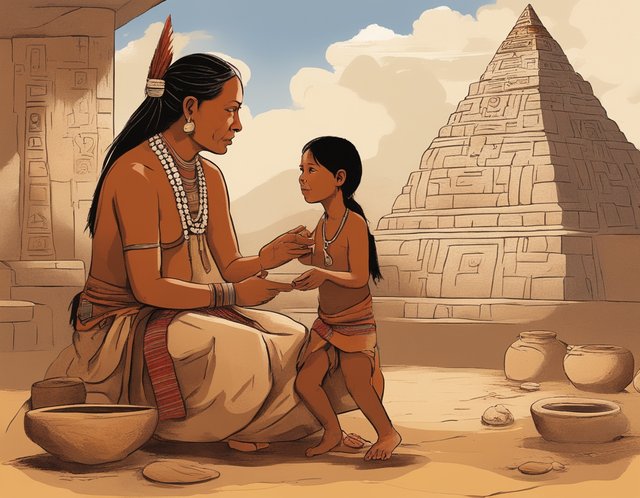The Forgotten Voices: Reviving the World’s Endangered Tongues. By Abir Hayet
Languages are the threads that weave the intricate tapestry of human identity. They carry the weight of history, the nuances of culture, and the whispers of ancestors long gone. Yet, today, many of these threads are fraying, on the brink of unraveling into silence. In a world where over 7,000 languages once thrived, we are witnessing an unprecedented linguistic extinction one that threatens not just words, but entire ways of understanding the world.
A Language on the Brink
Nestled high in the Andes, a village named Chinchero hides among the peaks, its air rich with the fragrance of wild herbs. Here, the ancient language of Quechua whispers through the valleys, carried on the wind that rustles the leaves of sacred trees. I sat with Doña Rosa, the village elder, in her humble adobe home, where the warmth of the hearth contrasted sharply with the cold reality outside: Quechua, once the language of the mighty Inca Empire, is now spoken fluently by only a handful of its descendants.
Doña Rosa, frail yet dignified, shared a tale in Quechua, her voice a delicate thread connecting the past with the present. Though I did not understand the words, the emotion was palpable. Her stories

of love, loss, and the reverent relationship with Pachamama were more than mere narratives; they were the essence of her culture, at risk of fading into obscurity. “These stories are who we are,” she said through a translator, “If our language dies, so do we.”
The Urgency of Preservation
The urgency to preserve these endangered languages is more critical than ever. According to UNESCO, one language dies every two weeks, taking with it not just words but a vast repository of knowledge about our world. Languages like Quechua hold insights into traditional medicinal practices, ecological wisdom, and social structures that are irreplaceable.
Dr. Alina Stern, a linguist dedicated to documenting and revitalizing endangered languages, offered a sobering perspective. “When a language disappears, we lose not only a mode of communication but a whole worldview,” she explained. “This loss is a blow to our collective intellectual heritage, which is why revitalization efforts are crucial.”
Dr. Stern has spent years in Southeast Asia, recording languages and helping develop educational programs. Yet, she acknowledges the challenges. “Globalization and modernization are like tidal waves,” she said. “They bring technology and progress but also erode traditional ways of life, including languages.”
Innovative Solutions and Success Stories
Despite the threats, hope glimmers through innovative efforts. Technology, though a double-edged sword, offers powerful tools for language preservation. In New Zealand, a tech startup has developed an app that uses augmented reality to teach Māori to children. “We’re not just preserving the language,” said one of the developers, “We’re breathing new life into it by making it relevant in today’s world.”
Another success story comes from the Hawaiian language revival movement. In the 1980s, Hawaiian was at risk of extinction, with only a few fluent speakers left. Today, through immersion schools and community programs, Hawaiian is experiencing a renaissance. The efforts of dedicated activists and educators have transformed the language from the brink of extinction to a vibrant, living entity once more.
A Personal Journey of Rediscovery
The quest to preserve endangered languages is not just a professional endeavor; it is deeply personal for those who face the loss of their heritage. Javier, a young man from a remote region of Mexico, speaks Huave, a language with fewer than 20,000 speakers. “I grew up speaking only Spanish,” Javier admitted. “I never saw the point of learning Huave until I realized how much of our culture was slipping away.”
Javier’s journey to learn Huave was not merely academic; it was a profound personal reclamation. “Now, when I speak Huave, I feel like I’m connecting with my ancestors,” he said. “It’s as if they’re still here with me, guiding me.”
The Future of Endangered Languages
The stories of Doña Rosa, Dr. Stern, and Javier highlight a fundamental truth: languages are not just tools for communication; they are living entities that hold the soul of a culture. As we navigate a globalized world, the fight to preserve these endangered tongues becomes crucial not just for cultural heritage but for our shared human experience.
To explore the impact of language loss, I visited an interactive digital archive, a treasure trove of audio recordings, and stories from dying languages. It revealed how much we stand to lose unique ways of seeing the world, understanding nature, and experiencing human connection. This digital age, while threatening, also holds the promise of preserving and revitalizing these precious voices.
Call to Action
Language preservation is a battle fought on many fronts, and every effort counts. You can support this cause by learning about endangered languages, participating in community language programs, or contributing to organizations dedicated to language revitalization. Each action, no matter how small, helps to keep the thread of our collective heritage from unraveling.
In the end, language is more than a means of communication; it is the key to understanding our past, present, and future. As we stand on the precipice of losing these linguistic treasures, it is our responsibility to listen, to care, and to act.
So, the next time you hear a language you don’t understand, pause and listen. You might be hearing the echoes of a world on the brink of vanishing, waiting for someone to remember.